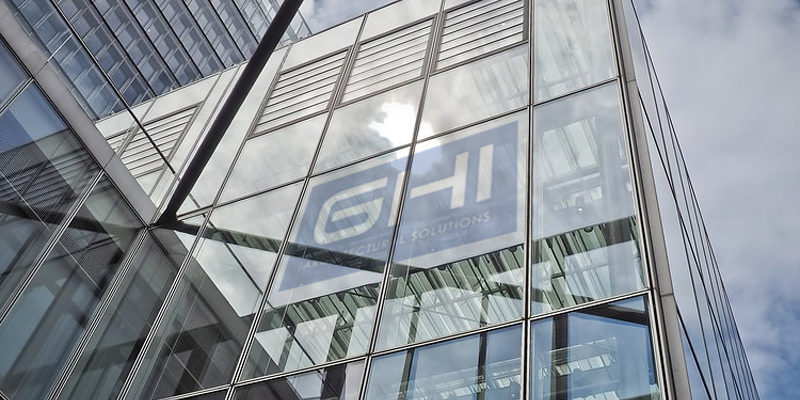Aluminium Windows – Is This Rust?
When it comes to affordability, thermal performance and design flexibility, nothing beats aluminium windows. They are also good-looking, durable and low maintenance. Unlike other materials, aluminium won’t crack, split, swell or warp. It also extremely strong – three times stronger, in fact, than PVC, and over four times stronger than wood. With all these advantages, you might be wondering why all windows aren’t aluminium windows. If you’re not wondering that, you are no doubt someone who’s concerned about rust – especially if you live on the coast or any other area where more extreme weather conditions are common.
But here’s the good news:
Aluminium doesn’t rust! No, really. That dull grey, powdery-type substance you may have noticed on aluminium window and door frames is actually corrosion, not rust. But aren’t they the same thing? Not at all! People often use the terms “rust” and “corrosion” interchangeably, but they are definitely not the same. Corrosion is actually a broad term referring to the wearing away of metal, caused by a chemical reaction. Rust, on the other hand, is a type of corrosion, but only when referring to the oxidation of iron or steel.
Aluminium doesn’t contain iron or steel, therefore it doesn’t rust. What it does do is corrode. In fact, it’s very prone to corrosion. However, just as the fat in avocados is good fat, the corrosion on aluminium is good corrosion. Why? Because aluminium corrosion is actually aluminium oxide, which is an extremely hard material that protects the aluminium from further corrosion. It’s kind of genius when you think about it. Oxidation halts aluminium corrosion in its tracks. And, unlike rust, which flakes easily and is easy to remove, aluminium oxidation is not easy to chip off.
But What If I Don’t Want My Aluminium Windows To Corrode At All?
It’s possible to anodise aluminium to protect it from corrosion. Anodisation is the process whereby aluminium passes through an acidic liquid solution that’s electrically charged. The solution is made up of a number of chemicals that actually change the surface texture of the aluminium but on a microscopic level. This serves to thicken the surface of the aluminium, creating a physical barrier between it and the surrounding environment.
An added benefit of anodising aluminium is that it’s the perfect way to introduce colour into the equation. This is done either by coating the aluminium with a special kind of paint during anodising or by incorporating it directly onto the surface. In addition to shielding the metal from corrosion, anodising also helps protect your aluminium windows from everyday scratches and dents that occur as a result of frequent opening and closing.
The Science Behind Aluminium Corrosion
If you’re still worried that aluminium corrosion may still be a bad thing, think about this: Aeroplanes are made from aluminium, so they don’t rust despite their constant exposure snow, rain, sleet and other extreme weather conditions. However, science tells us that because pure aluminium reacts so readily with water, chemistry laws dictate that an aeroplane’s shell should actually dissolve in the rain! Fortunately – for the airlines and passengers – this doesn’t happen! Why? Because aluminium oxide forms on the surface of the metal and forms a hard, protective shield against any further corrosion.
Researchers from the University of Chicago and the Lawrence Berkeley National Laboratory conducted a study into what happens, at an atomic level, when water and aluminium oxide meet. Aluminium oxide comprises aluminium atoms and oxygen atoms, bonded together. Add water to the mix, however, and these atoms move apart. The result is that its structure actually changes to the point where it becomes chemically inert and thus unable to react any further with additional water molecules or oxygen. This physical change in the intrinsic molecular structure of aluminium is why aluminium oxide resists corrosion.
It truly is a miracle of science.
Caring For Your Aluminium Windows
So we now know that aluminium oxide is good, but we have to admit it doesn’t look particularly great. Over time, the finish starts to look dull, and you may notice a build-up of calcium, lime or hard water crusting. What can you do to get your aluminium windows looking as smart as when you first installed them?
For unpainted, un-anodised aluminium, use a soft cloth and a mild, non-abrasive cleaner (such as dishwashing liquid or a cream household cleaner) to remove surface dirt and oil. Do not use sandpaper, steel wool or steel wire brushes, as this will remove the protective oxide layer. Once the surface is clean, hand polish your window frames with a reputable metal polish. Finally, rub over the polished surface with a clean, soft cloth and wax polish.
Anodised aluminium window frames must be carefully cleaned so that you don’t damage the coating or protective film. Follow the same steps as for un-anodised aluminium, and remember never to use abrasive cleaning materials or cloths.
GHI Architectural Hardware has been the leading distributor of hardware to the architectural aluminium industry in South Africa since 1983. Talk to us about the benefits of installing aluminium windows in your home or office.

